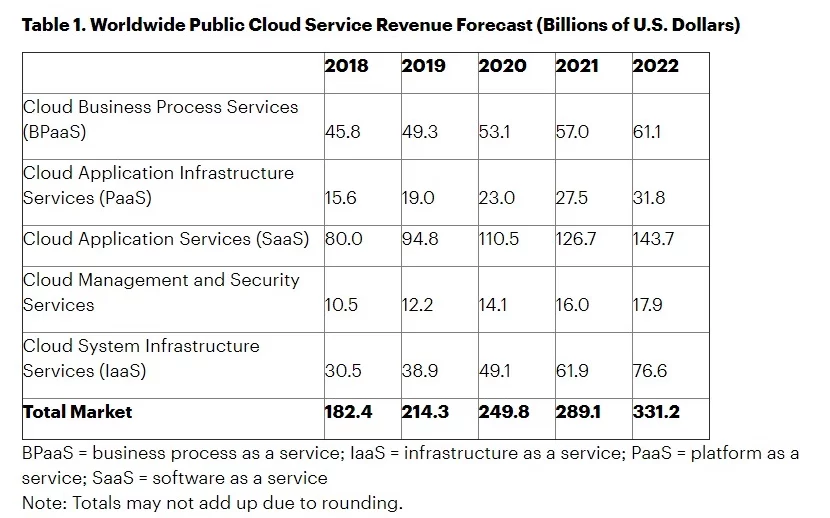The adoption of cloud computing capabilities is increasingly becoming a business advantage among enterprises. Cloud business services are considered as a digital transformation engine that ensures optimal working capacity and business continuity: everything from apps to storage can be used over the Internet and paid on a pay-as-you-go basis. In today’s article, we will focus on one of the biggest trends in cloud computing – multi-cloud management. In particular, we’ll shed light on what multi-cloud is, why it’s a favoured strategy of many European businesses, and what advantages you can derive from a multi-cloud management platform.
What is multi-cloud and why it’s a must-have?
Do you rely on cloud services in your business? If one service provider renders you email service, another delivers you an inventory app or CRM, and your company is backed up by a third-party vendor, this all is known as multi-cloud management. In other words, the term “multi-cloud management platform” refers to the use of one or more cloud deployment of the same type (public or private) supplied by different cloud providers. It involves not only large-scale storage capacities – Infrastructure-as-a-service (IaaS), Platform-as-a-service (Paas), or an application (Software-as-a-service – SaaS) can also be used by various providers to work together.
Forms of cloud computing
| Infrastructure-as-a-Service (IaaS) | Platform-as-a-service (Paas) | Software-as-a-service (SaaS) |
| provides users with storage capacities, data centers, network (APIs instead of traditional networking hardware), compute (virtualized compute resources) | provides users with a cloud environment (incl. middleware, database management, operating systems and development tools) to build, customize, and test their apps. | provides users with access to cloud-based software instead of installing it. |

Source: Gartner (April 2019)
According to a 2018 survey, 86% of the respondents (727 cloud application management decision-makers in a number of countries worldwide) considered their cloud strategy as “multi-cloud” and were ready to invest in it in order to deliver operational efficiency.
If you inquired about just a few reasons for a need to diversify your cloud business services, mitigating security risks, and planning optimal costs come first. Distributing of individual tasks to vendors means no dependence on one vendor and their business processes. You can assign different levels of security to your data choosing a cloud provider. Besides, your business is not locked in one cloud and does not depend on its functionality and, what is more important, price agreements. Let’s detail the story.
What is the state of things with cloud service integration in Europe?
You will not be a pioneer in moving your business functions to the multi-cloud. While cloud adoption rates in Europe vary depending on a country, some reports claim Europe to lead the global market of cloud adoption. However, you can find contrast figures that are as far apart as the poles. Thus, 84% cloud service integration rate is quoted implying companies using Office365, Dropbox, and other cloud-based apps. Meanwhile, Eurostat reports a rate of 21%, which refers to the use of cloud computing instead of having its own infrastructure.
So, the truth is out there and involves European businesses to increasingly exploit the potential of cloud computing capabilities while the cloud vendors proactively cultivate the market.
As for the multi-cloud management platform specifically, while businesses seek to enhance privacy and optimize their workloads through a variety of environments, multi-cloud is becoming more and more common. According to a recent study, 88 % of 525 polled companies from Europe, the Middle East, and Africa (EMEA) house their business perform in multi-cloud apps while this parameter totals 87% in the Americas and 86 % in the Asian-Pacific region. Further, 54% of the companies surveyed believe the cloud to be “top strategic trend” for the next several years.
Picking the key cloud business services providers in Europe, such companies as Amazon, Google, Microsoft, IBM, and AT&T lead the market, controlling the share of 55%. Alibaba also expanded its capacity in the region by opening two data centers in the UK in 2016. These vendors host everything from start-ups to Netflix and Airbnb.
The front runners of European cloud computing capabilities adoption are the UK and Germany. These countries have created cloud-friendly environments that include relevant legislation, national broadcast plans, and average mobile data speeds, and beat a path for other countries’ concerns over cloud computing.
In Germany, Microsoft offered Azure cloud services from two cloud centers, the data in which are controlled by an independent German company. It’s this very company or customers who may permit Microsoft to access the data.
The reason is that many European companies are concerned about data confidentiality. Businesses worry that their data may be processed somewhere on the other side of the Earth since the leading cloud business services vendors are US-based companies. In order to disrupt this ascendance, the European Commission has launched a project called GAIA-X involving a number of potential use-case examples from various industries – healthcare, finance, public administration, science, and education. The project is supported by the government officials as well as 100 European companies with SAP SE, Deutsche Telekom AG, Deutsche Bank AG, Siemens, and Bosch among them. The project stakeholders should give European cloud computing services much more control.
Regardless of whether the data is finally stored in Europe or processed by providers in the USA, a variety of cloud providers will certainly contribute to competition, which entails economic benefits for the business.
Why can you benefit from a multi-cloud management platform?
Firstly, it’s the power of choice that makes multi-cloud app management a pay-off investment. By employing multiple cloud providers, your business can benefit from the best cloud services and match them to your business needs on a tailor-made basis.
Secondly, multi-cloud is about flexibility. In case of business expansion, you can move a new part of the workload to a relevant cloud provider. Reducing the business will not force you to spend on giant hosting environments. The same is about the delivery of additional functionality to your clients in cloud service – there is no need to employ additional manpower.
Thirdly, if you contract multiple cloud providers, you avoid one vendor lock in. If your business is tied to one cloud service, single cloud risk management will cost a pretty penny to migrate to another vendor. You should also bear in mind that your business might always outgrow the current cloud management software offer and there’s no guarantee that a single cloud provider would manage it.
A multi-cloud management platform can significantly reduce costs. Cloud providers set the best price compared to that of rivals. However, the price can be a headache if you do not scale up your business needs and determine requirements. How much should be your multi-cloud management costs? How to choose the right package of cloud business services if they seem to be the same? What should you do to succeed with a multi-cloud management platform?
Multi-cloud costs management
What else we want to share in our today’s article is a 4-step-program on how to control and optimize your multi-cloud spendings.
- Build your multi-cloud migration strategy. Determine your business needs and goals, map them to cloud service offerings, and track the state of things.
- Visualize your multi-cloud app costs. Take advantage of the costs breakdown structure of your multiple clouds. Accounting data will show where costs can be charged back or redirected for other cloud services. Make realistic budgeting, in other words.
- Learn the real impact of your multi-cloud app management. Know how your corporate departments make use of the cloud. Make sure you accurately allocate cloud services across your enterprise and know how each department benefits from them.
- Optimize your multi-cloud costs. Select the optimal volume for your multi-cloud management platform, scale it up, increase your management effort to map the right cloud resources to individual tasks. Identify unused or underused cloud services. Take advantage of perks and privileges to cloud business services providers offer. Make sure your business gets the best possible rate.
Being a smart multi-cloud costs manager may not be so easy. Despite this, it is worth trying to go multi-cloud and fuel your business with flexibility, scalability, and maximum agility.
Thank you for reading.









